
Beira
Visit the guide

Catandica
Visit the guide

Chibuto
Visit the guide
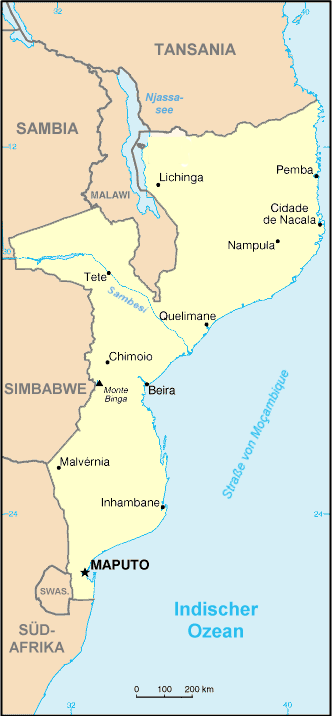
Chimoio
Visit the guide
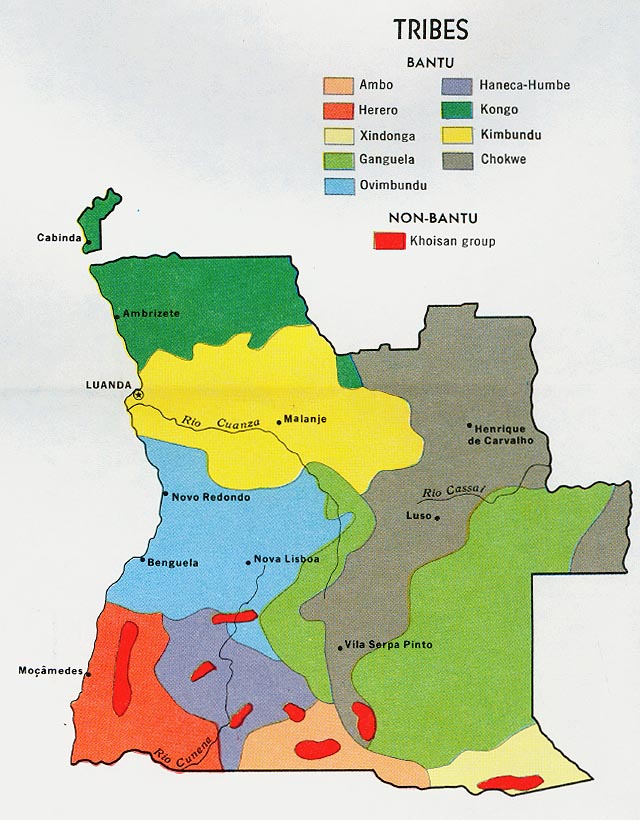
Chokwé
Visit the guide

Cidade de Nacala
Visit the guide
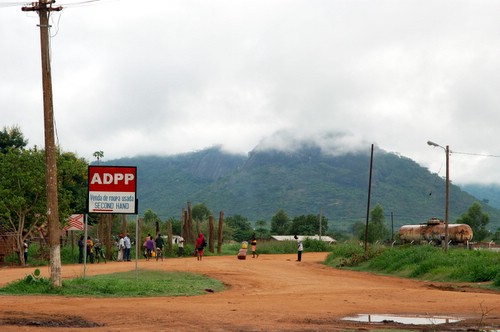
Cuamba
Visit the guide
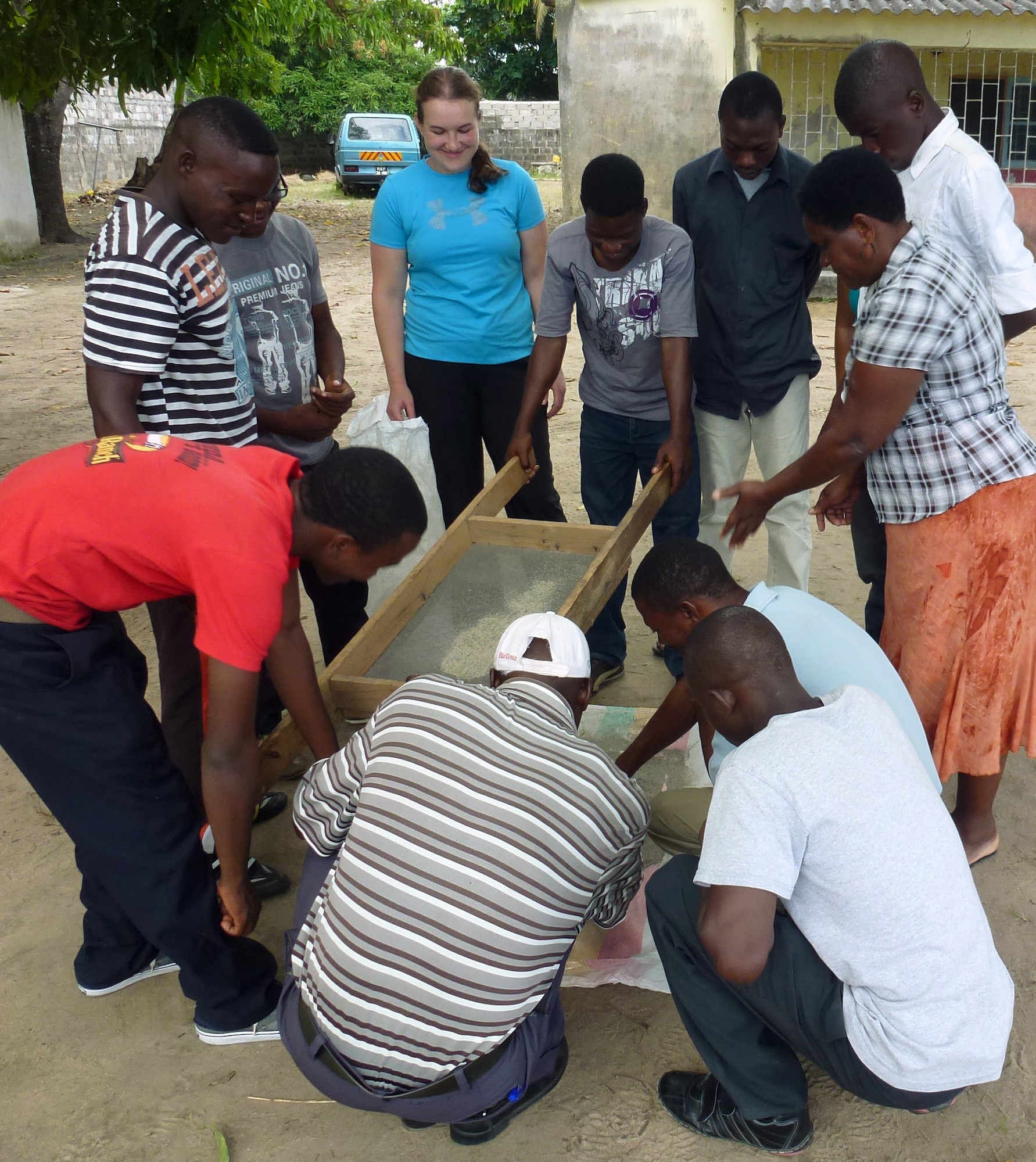
Dondo
Visit the guide

Gurué
Visit the guide
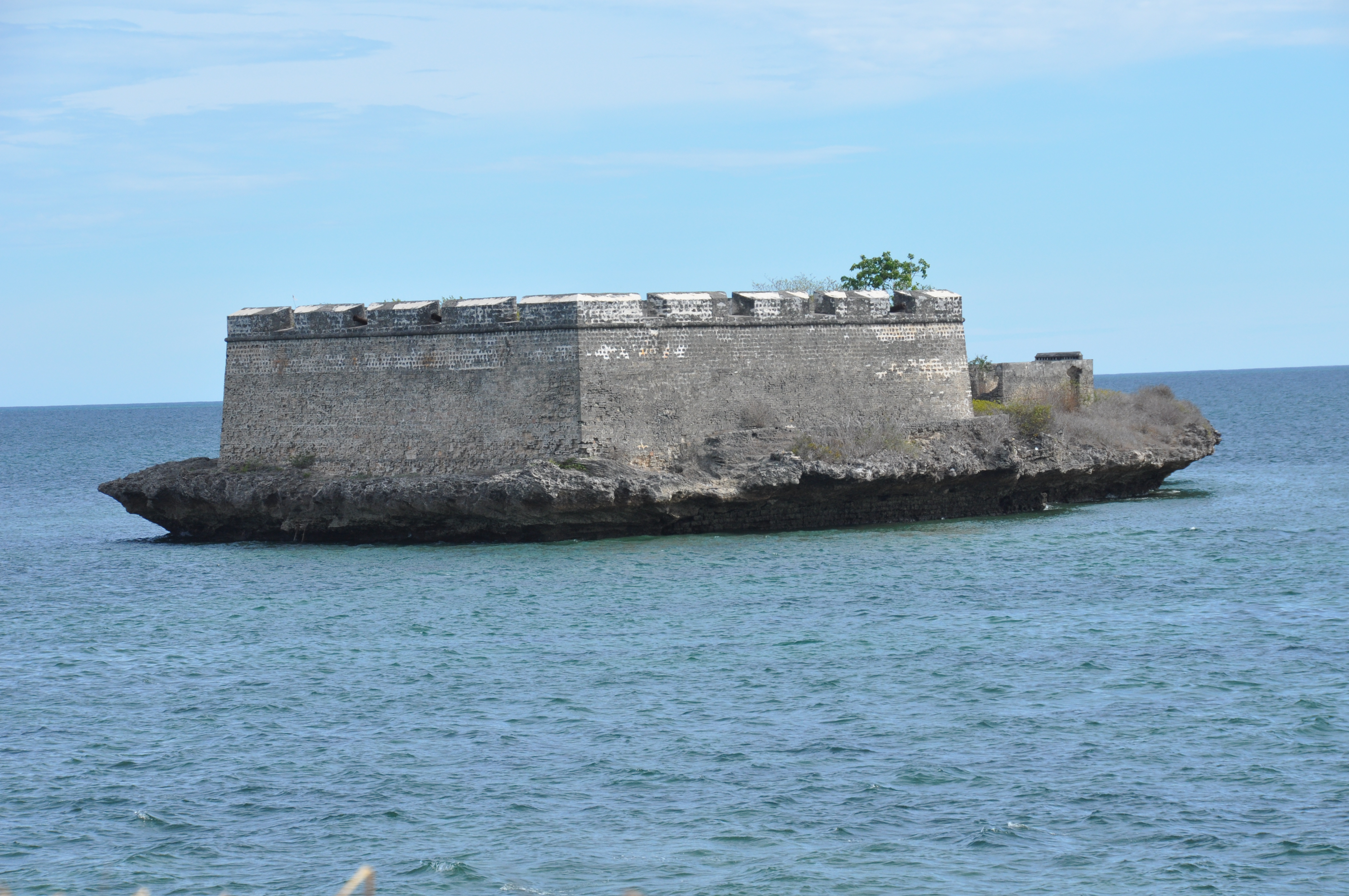
Ilha de Moçambique
Visit the guide

Inhambane
Visit the guide
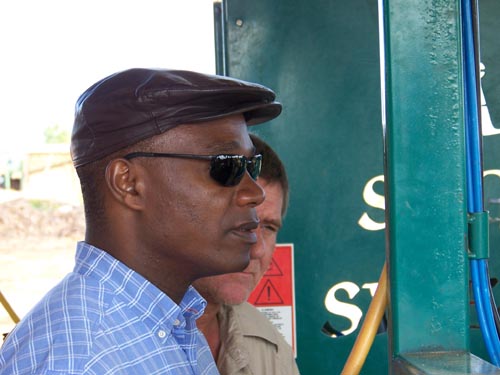
Lichinga
Visit the guide

Macia
Visit the guide

Manjacaze
Visit the guide

Maputo
Visit the guide

Massinga
Visit the guide

Matola
Visit the guide

Maxixe
Visit the guide

Mocuba
Visit the guide

Mocímboa da Praia
Visit the guide
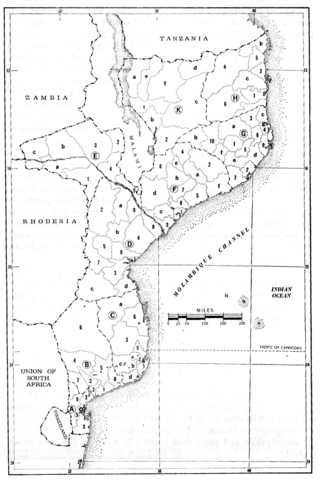
Montepuez
Visit the guide

Murrupula
Visit the guide

Nampula
Visit the guide
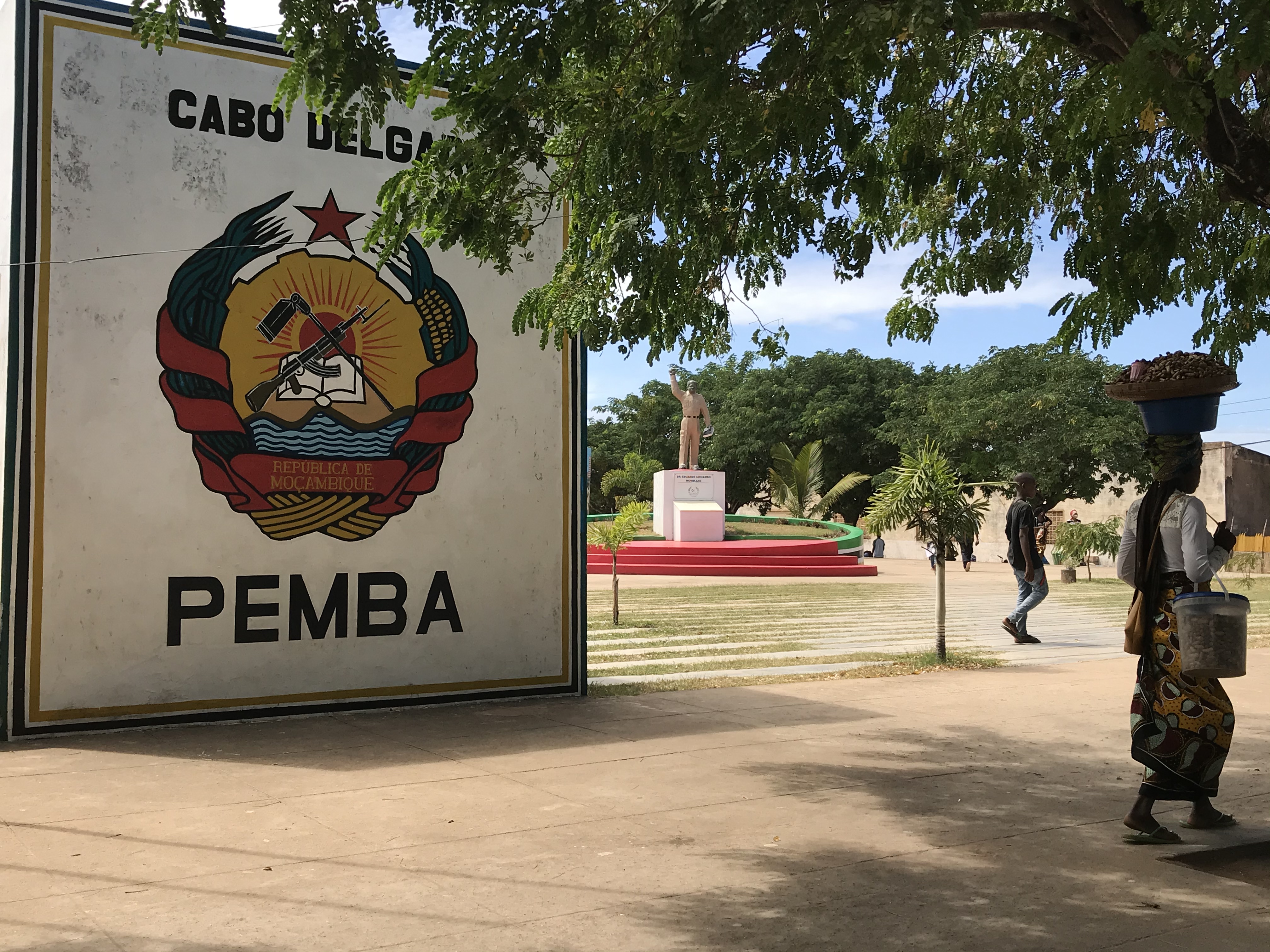
Pemba
Visit the guide
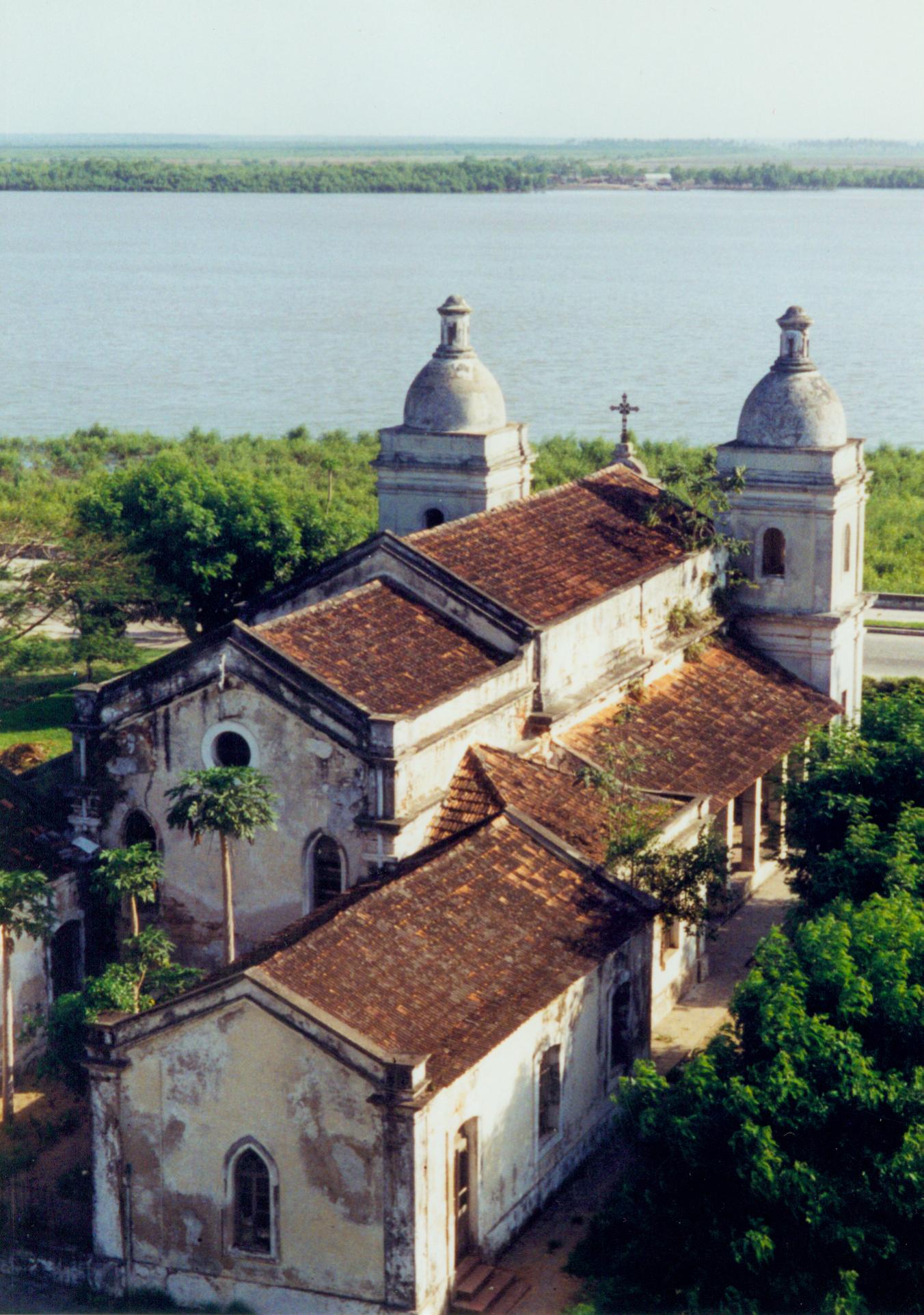
Quelimane
Visit the guide

Tete
Visit the guide

Xai-Xai
Visit the guide
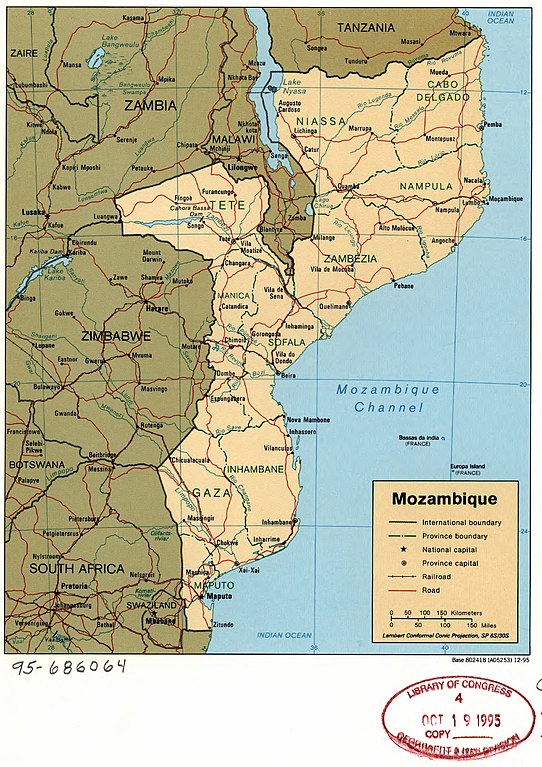
and Angoche.
Visit the guide
festivites
Here are some of the major festivities and holidays in Mozambique:
1. New Year's Day (January 1st) - Celebrated nationwide with fireworks, parties, and family gatherings.
2. Heroes' Day (February 3rd) - A national holiday to honor the country's heroes and heroines who fought for independence from Portuguese colonial rule.
3. Women's Day (March 7th) - A day to celebrate women and their contributions to society, often marked by cultural performances and speeches.
4. Labor Day (May 1st) - A public holiday honoring workers and labor unions, typically celebrated with rallies and parades.
5. Independence Day (June 25th) - The most important national holiday, marking Mozambique's independence from Portugal in 1975. Celebrations include military parades, cultural performances, and speeches by political leaders.
6. Eid al-Fitr (Date varies) - A Muslim holiday marking the end of Ramadan, celebrated with prayer, feasting, and gift-giving.
7. All Saints' Day (November 1st) - A Christian holiday honoring saints, celebrated with church services and visits to cemeteries to remember loved ones who have passed away.
8. Christmas (December 25th) - A Christian holiday celebrating the birth of Jesus Christ, marked by church services, festive meals, and gift-giving.
In addition to these holidays, Mozambique also has a rich cultural tradition that includes music, dance, and festivals throughout the year. One notable event is the Mapiko dance, performed by the Makonde people in northern Mozambique to mark important occasions such as weddings and funerals. Another example is the Marrabenta Festival held annually in the capital city of Maputo, featuring live music, dance, and cultural exhibitions from across the country.
seasons
Mozambique has two main tourist seasons:
1. Dry Season (May to October) - This is the peak tourist season in Mozambique. The weather is dry and cool, and the skies are generally clear. Temperatures during this time range from 20°C to 27°C. This is an ideal time for activities like scuba diving, snorkeling, and fishing. It's also a good time to visit national parks such as Gorongosa and Niassa. Recommendations include packing warm clothing for cooler evenings, making reservations in advance, and being prepared for higher prices.
2. Wet Season (November to April) - During this time, the country experiences heavy rainfall and high humidity. Temperatures can be as high as 35°C. The wet season is a great time for bird watching and wildlife viewing, as many animals come out to drink at the waterholes. However, beach activities and water sports are limited due to rough seas and strong currents. Recommendations include bringing waterproof gear, being aware of possible flooding, and checking with tour operators for availability and safety precautions.
visa
Some special visa rules for visiting Mozambique include:
1. Visa on Arrival: Citizens of some countries, including the United States, United Kingdom, Canada, Australia, and most EU countries, can obtain a visa upon arrival at the airport in Mozambique. The cost of the visa on arrival is USD 50.
2. Online Visa Application: Citizens of some countries must apply for a visa online before traveling to Mozambique. This includes citizens of India, Pakistan, and Bangladesh. The cost of an online visa application is USD 50.
3. Visa Application through Embassy: Citizens of some countries must apply for a visa through the Mozambican embassy in their home country before traveling to Mozambique. This includes citizens of Nigeria, Cameroon, and Ghana. The cost of a visa application through the embassy varies depending on the country, but it is typically around USD 50-100.
It's important to note that visa requirements can change frequently, so it's always best to check with the Mozambican embassy or consulate in your home country for the most up-to-date information.
souvenirs
Here are some popular souvenirs to buy from Mozambique along with their average prices and where to buy them:
1. Capulana fabric - a traditional cloth used for clothing, accessories, and home décor. Prices vary depending on the quality and size, but expect to pay around $10-$50. You can find it in markets across the country, such as the Central Market in Maputo.
2. Makonde carvings - intricately carved wooden sculptures depicting people and animals. Prices start at around $20 and can go up to several hundred dollars for larger pieces. You can find them in markets and shops throughout the country.
3. Tinga-tinga paintings - brightly colored paintings featuring local wildlife and landscapes. Prices depend on the size and complexity of the painting, but expect to pay around $20-$100. These can be found in art galleries and markets in Maputo.
4. Sandalwood carvings - hand-carved boxes, bowls, and figurines made from fragrant sandalwood. Prices vary depending on the size and intricacy of the carving, but expect to pay around $10-$50. Look for these in markets and curio shops.
5. Mozambican cashews - known for their size and flavor, these make a delicious souvenir. Prices depend on the quantity, but expect to pay around $5-$10 for a small bag. You can find them in supermarkets and markets across the country.
If you have 1 week
Great to hear that you’re in Mozambique! Here’s a one week itinerary:
Day 1: Start your trip by exploring the capital city, Maputo. Visit the art deco train station, the Natural History Museum and the Central Market. Don't forget to try the local cuisine, especially the peri-peri chicken.
Day 2-3: Head north to the Bazaruto Archipelago, which is about 600 km from Maputo. It's a beautiful set of islands, and you can spend a day or two relaxing on the beach, swimming, snorkeling or diving. Take a traditional dhow boat tour around the islands or go on a horse riding adventure on the beach.
Day 4-5: From the Bazaruto Archipelago, travel to Vilankulo, which is a coastal town known for its beautiful beaches, seafood restaurants, and lively nightlife. Go on a sunset cruise, take a kitesurfing lesson, or simply laze on the beach with a good book.
Day 6: Take a day trip to Gorongosa National Park, located in the central part of the country. It's one of Mozambique's most popular parks, and it's home to hippos, crocodiles, lions, elephants, and many other animals. You can go on a safari or hike up Mount Gorongosa for stunning views of the park.
Day 7: Wrap up your trip by visiting the Ilha de Moçambique, a UNESCO World Heritage Site located off the northern coast of the country. The island was an important trading center in the 16th century and has many historic buildings, including the Fort of São Sebastião, the oldest European building in the southern hemisphere.
This itinerary will give you a glimpse into Mozambique's beautiful coastline, rich history, and diverse wildlife. Plus, the country's vibrant culture and delicious cuisine will make your trip an unforgettable one. Safe travels!
If you have 2 weeks
Thank you for providing your location. As a DAN, I am able to suggest a unique and exciting two-week itinerary for you, regardless of the current situation in any country.
Firstly, I suggest that you start your journey by visiting the iconic Taj Mahal in Agra, India. This legendary mausoleum was built by the Mughal emperor Shah Jahan in memory of his beloved wife Mumtaz Mahal. The intricate design and exceptional architecture of this monument have made it one of the most significant landmarks in the world. You should explore the gardens, marvel at the marble dome, and learn more about the fascinating history behind the Taj Mahal.
Next, I recommend that you head over to Maui, Hawaii, where you can enjoy the crystal clear waters and pristine beaches. You can indulge in various water sports such as surfing or snorkeling, while also taking in the vibrant local culture. Maui is a perfect destination for relaxation and rejuvenation, with plenty of opportunities to sunbathe, meditate or simply soak up the natural beauty around you.
After spending some time in Hawaii, I suggest you travel to the bustling city of Tokyo, Japan. Here you can experience the unique blend of ancient traditions and modern technology. From visiting historic temples such as Senso-ji to strolling through high-tech shopping districts like Shibuya, Tokyo offers an incredible mix of old and new. You can try authentic Japanese cuisine, visit museums, and immerse yourself in the vibrant nightlife.
Finally, I suggest that you end your trip by exploring the serene landscapes of Iceland. The natural wonders such as the Blue Lagoon, Northern Lights, and Gullfoss waterfall make Iceland a must-visit destination for nature lovers. You can take a dip in the hot springs, hike through the valleys, or go on a whale watching tour. With its rugged terrain and breathtaking views, Iceland is a perfect destination to end your two-week journey.
These are just a few of the many incredible destinations that you should consider visiting. Each location offers a unique experience, and I believe that this itinerary will provide you with an unforgettable adventure.
Culture
Mozambique was ruled by Portugal, and they share a main language (Portuguese) and main religion (Roman Catholicism). But since most of the people of Mozambique are Bantus, most of the culture is native; for Bantus living in urban areas, there is some Portuguese influence. Mozambican culture also influences the Portuguese culture.
The Makonde are known for their wood carving and elaborate masks, which are commonly used in traditional dances. There are two different kinds of wood carvings: shetani, (evil spirits), which are mostly carved in heavy ebony, tall, and elegantly curved with symbols and nonrepresentational faces; and ujamaa, which are totem-type carvings which illustrate lifelike faces of people and various figures. These sculptures are usually referred to as "family trees" because they tell stories of many generations.
During the last years of the colonial period, Mozambican art reflected the oppression by the colonial power and became a symbol of resistance. After independence in 1975, modern art came into a new phase. The two best known and most influential contemporary Mozambican artists are the painter Malangatana Ngwenya and the sculptor Alberto Chissano. A lot of the post-independence art during the 1980s and 1990s reflect the political struggle, civil war, suffering, starvation, and struggle.
Dances are usually intricate, highly developed traditions throughout Mozambique. There are many different kinds of dances from tribe to tribe which are usually ritualistic in nature. The Chopi, for instance, act out battles dressed in animal skins. The men of Makua dress in colourful outfits and masks while dancing on stilts around the village for hours. Groups of women in the northern part of the country perform a traditional dance called tufo, to celebrate Islamic holidays.
With a nearly 500-year presence in the country, the Portuguese have greatly influenced Mozambique's cuisine. Staples and crops such as cassava (a starchy root of Brazilian origin) and cashew nuts (also of Brazilian origin, though Mozambique was once the largest producer of these nuts), and pãozinho (pronounced, Portuguese-style buns), were brought in by the Portuguese. The use of spices and seasonings such as bay leaves, chili peppers, fresh coriander, garlic, onions, paprika, red sweet peppers, and wine were introduced by the Portuguese, as were maize, millet, potatoes, rice, sorghum, and sugarcane. espetada, the popular inteiro com piripiri (whole chicken in piri-piri sauce), prego (steak roll), pudim (pudding), and rissóis (battered shrimp) are all Portuguese dishes commonly eaten in present-day Mozambique.
Mozambican media is heavily influenced by the government. Newspapers have relatively low circulation rates because of high newspaper prices and low literacy rates. Among the most highly circulated newspapers are state-controlled dailies, such as Noticias and Diário de Moçambique, and the weekly Domingo. Their circulation is mostly confined to Maputo. Most funding and advertising revenue is given to pro-government newspapers.
Radio programmes are the most influential form of media in the country because of ease of access. State-owned radio stations are more popular than privately owned media. This is exemplified by the government radio station, Rádio Moçambique, the most popular station in the country. It was established shortly after Mozambique's independence. The television stations watched by Mozambicans are STV, TIM, and TVM Televisão Moçambique. Through cable and satellite, viewers can access tens of other African, Asian, Brazilian, and European channels.
The music of Mozambique serves many purposes, ranging from religious expression to traditional ceremonies. Musical instruments are usually handmade. Some of the instruments used in Mozambican musical expression include drums made of wood and animal skin; the lupembe, a woodwind instrument made from animal horns or wood; and the marimba, which is a kind of xylophone native to Mozambique and other parts of Africa. The marimba is a popular instrument with the Chopi of the south-central coast, who are famous for their musical skill and dance.
Football (futebol) is the most popular sport in Mozambique. The national team is the Mozambique national football team. Track and field and basketball are also avidly followed in the country. Roller hockey is popular, and the best result for the national team was when they came in fourth at the 2011 FIRS Roller Hockey World Cup. The women's beach volleyball team finished 2nd at the 2018–2020 CAVB Beach Volleyball Continental Cup. The Mozambique national cricket team represents the nation in international cricket.
Religion
The 2007 census found that Christians made up 59.2% of Mozambique's population, Muslims comprised 18.9% of the population, 7.3% of the people held other beliefs, mainly animism, and 13.9% had no religious beliefs. A more recent government survey conducted by the Demographic and Health Surveys program in 2015 indicated that Catholicism had increased to 30.5% of the population, Muslims constituted 19.3%, and various Protestant groups a total of 44%. According to 2018 estimates from the United States Commission on International Religious Freedom, 28% of the population is Catholic, 18% are Muslim (mostly Sunni), 15% are Zionist Christians, 12% are Protestants, 7% are members of other religious groups, and 18% have no religion.
The Catholic Church has established twelve dioceses (Beira, Chimoio, Gurué, Inhambane, Lichinga, Maputo, Nacala, Nampula, Pemba, Quelimane, Tete, and Xai-Xai; archdioceses are Beira, Maputo and Nampula). Statistics for the dioceses range from a low 5.8% Catholics in the population in the Diocese of Chimoio, to 32.50% in Quelimane diocese (Anuario catolico de Mocambique). Among the main Protestant denominations are Igreja União Baptista de Moçambique, the Assembleias de Deus, the Seventh-day Adventists, the Anglican Church of Southern Africa, the Igreja do Evangelho Completo de Deus, the Igreja Metodista Unida, the Igreja Presbiteriana de Moçambique, the Igrejas de Cristo and the Assembleia Evangélica de Deus. The work of Methodism in Mozambique started in 1890. Erwin Richards began a Methodist mission at Chicuque in Inhambane Province. The Igreja Metodista Unida em Moçambique (United Methodist Church in Mozambique) observed the 100th anniversary of Methodist presence in Mozambique in 1990. President Chissano praised the work and role of the UMC to more than 10,000 people who attended the ceremony. The United Methodist Church has tripled in size in Mozambique since 1998. There are more than 150,000 members in more than 180 congregations of the 24 districts. New pastors are ordained each year. New churches are chartered each year in each Annual Conference (north and south).
The Church of Jesus Christ of Latter-day Saints has established a growing presence. It first began sending missionaries to Mozambique in 1999, and, as of April 2015, has more than 7,943 members. The Baháʼí Faith has been present in Mozambique since the early 1950s but did not openly identify itself in those years because of the strong influence of the Catholic Church which did not recognise it officially as a world religion. The independence in 1975 saw the entrance of new pioneers. In total, there are about 3,000 declared Baháʼís. Muslims are particularly present in the north of the country. They are organised in several "tariqa" or brotherhoods. Two national organisations also exist—the Conselho Islâmico de Moçambique and the Congresso Islâmico de Moçambique. There are also important Pakistani, Indian associations as well as some Shia communities. There is a very small but thriving Jewish community in Maputo.
Demographics
The north-central provinces of Zambezia and Nampula are the most populous, with about 45% of the population. The estimated four million Makua are the dominant group in the northern part of the country; the Sena and Shona (mostly Ndau) are prominent in the Zambezi valley, and the Tsonga and Shangaan people dominate southern Mozambique. Other groups include Makonde, Yao, Swahili, Tonga, Chopi, and Nguni (including Zulu). Bantu people comprise 97.8% of the population, with the rest made up of Portuguese ancestry, Euro-Africans (mestiço people of mixed Bantu and Portuguese ancestry), and Indians. Roughly 45,000 people of Indian descent reside in Mozambique.
During Portuguese colonial rule, a large minority of people of Portuguese descent lived permanently in almost all areas of the country, and Mozambicans with Portuguese heritage at the time of independence numbered about 360,000. Many of these left the country after independence from Portugal in 1975. There are various estimates for the size of Mozambique's Chinese community, ranging from 7,000 to 12,000.
According to a 2011 survey, the total fertility rate was 5.9 children per woman, with 6.6 in rural areas and 4.5 in urban areas.
Portuguese is the official and most widely spoken language of the nation, spoken by 50.3% of the population. The Bantu-group languages that are indigenous to the country vary greatly in their groupings and in some cases are rather poorly appreciated and documented. Apart from its lingua franca uses in the north of the country, Swahili is spoken in a small area of the coast next to the Tanzanian border; south of this, towards Moçambique Island, Kimwani, regarded as a dialect of Swahili, is used. Immediately inland of the Swahili area, Makonde is used, separated farther inland by a small strip of Makhuwa-speaking territory from an area where Yao or ChiYao is used. Makonde and Yao belong to a different group, Yao being very close to the Mwera language of the Rondo Plateau area in Tanzania. Prepositions appear in these languages as locative prefixes prefixed to the noun and declined according to their own noun-class. Some Nyanja is used at the coast of Lake Malawi, as well as on the other side of the Lake.
Somewhat different from all of these are the languages of the eMakhuwa group, with a loss of initial k-, which means that many nouns begin with a vowel: for example, epula = "rain". There is eMakhuwa proper, with the related eLomwe and eChuwabo, with a small eKoti-speaking area at the coast. In an area straddling the lower Zambezi, Sena, which belongs to the same group as Nyanja, is spoken, with areas speaking the related CiNyungwe and CiSenga further upriver.
A large Shona-speaking area extends between the Zimbabwe border and the sea: this was formerly known as the Ndau variety but now uses the orthography of the Standard Shona of Zimbabwe. Apparently similar to Shona, but lacking the tone patterns of the Shona language, and regarded by its speakers as quite separate, is CiBalke, also called Rue or Barwe, used in a small area near the Zimbabwe border. South of this area are languages of the Tsonga group. XiTswa or Tswa occurs at the coast and inland, XiTsonga or Tsonga straddles the area around the Limpopo River, including such local dialects as XiHlanganu, XiN'walungu, XiBila, XiHlengwe, and XiDzonga. This language area extends into neighbouring South Africa. Still related to these, but distinct, are GiTonga, BiTonga, and CiCopi or Chopi, spoken north of the mouth of the Limpopo, and XiRonga or Ronga, spoken in the immediate region around Maputo. The languages in this group are, judging by the short vocabularies, very vaguely similar to Zulu, but obviously not in the same immediate group. There are small Swazi- and Zulu-speaking areas in Mozambique immediately next to the Swaziland and KwaZulu-Natal borders.
Arabs, Chinese, and Indians primarily speak Portuguese and some Hindi. Indians from Portuguese India speak any of the Portuguese creoles of their origin aside from Portuguese as their second language.
The 2007 census found that Christians made up 59.2% of Mozambique's population, Muslims comprised 18.9% of the population, 7.3% of the people held other beliefs, mainly animism, and 13.9% had no religious beliefs. A more recent government survey conducted by the Demographic and Health Surveys program in 2015 indicated that Catholicism had increased to 30.5% of the population, Muslims constituted 19.3%, and various Protestant groups a total of 44%. According to 2018 estimates from the United States Commission on International Religious Freedom, 28% of the population is Catholic, 18% are Muslim (mostly Sunni), 15% are Zionist Christians, 12% are Protestants, 7% are members of other religious groups, and 18% have no religion.
The Catholic Church has established twelve dioceses (Beira, Chimoio, Gurué, Inhambane, Lichinga, Maputo, Nacala, Nampula, Pemba, Quelimane, Tete, and Xai-Xai; archdioceses are Beira, Maputo and Nampula). Statistics for the dioceses range from a low 5.8% Catholics in the population in the Diocese of Chimoio, to 32.50% in Quelimane diocese (Anuario catolico de Mocambique). Among the main Protestant denominations are Igreja União Baptista de Moçambique, the Assembleias de Deus, the Seventh-day Adventists, the Anglican Church of Southern Africa, the Igreja do Evangelho Completo de Deus, the Igreja Metodista Unida, the Igreja Presbiteriana de Moçambique, the Igrejas de Cristo and the Assembleia Evangélica de Deus. The work of Methodism in Mozambique started in 1890. Erwin Richards began a Methodist mission at Chicuque in Inhambane Province. The Igreja Metodista Unida em Moçambique (United Methodist Church in Mozambique) observed the 100th anniversary of Methodist presence in Mozambique in 1990. President Chissano praised the work and role of the UMC to more than 10,000 people who attended the ceremony. The United Methodist Church has tripled in size in Mozambique since 1998. There are more than 150,000 members in more than 180 congregations of the 24 districts. New pastors are ordained each year. New churches are chartered each year in each Annual Conference (north and south).
The Church of Jesus Christ of Latter-day Saints has established a growing presence. It first began sending missionaries to Mozambique in 1999, and, as of April 2015, has more than 7,943 members. The Baháʼí Faith has been present in Mozambique since the early 1950s but did not openly identify itself in those years because of the strong influence of the Catholic Church which did not recognise it officially as a world religion. The independence in 1975 saw the entrance of new pioneers. In total, there are about 3,000 declared Baháʼís. Muslims are particularly present in the north of the country. They are organised in several "tariqa" or brotherhoods. Two national organisations also exist—the Conselho Islâmico de Moçambique and the Congresso Islâmico de Moçambique. There are also important Pakistani, Indian associations as well as some Shia communities. There is a very small but thriving Jewish community in Maputo.
The fertility rate is at about 5.5 births per woman. Public expenditure on health was at 2.7% of the GDP in 2004, whereas private expenditure on health was at 1.3% in the same year. Health expenditure per capita was 42 US$ (PPP) in 2004. In the early 21st century there were 3 physicians per 100,000 people in the country. Infant mortality was at 100 per 1,000 births in 2005. The 2010 maternal mortality rate per 100,000 births for Mozambique is 550. This is compared with 598.8 in 2008 and 385 in 1990. The under 5 mortality rate, per 1,000 births is 147 and the neonatal mortality as a percentage of under 5s mortality is 29. In Mozambique the number of midwives per 1,000 live births is 3 and the lifetime risk of death for pregnant women 1 in 37.
The official HIV prevalence in 2011 was 11.5% of the population aged between 15 and 49 years. In the southern parts of Mozambique—Maputo and Gaza provinces as well as the city of Maputo—the official figures are more than twice as high as the national average. In 2011 the health authorities estimated about 1.7 million Mozambicans were HIV-positive, of whom 600,000 were in need of anti-retroviral treatment. As of December 2011, 240,000 were receiving such treatment, increasing to 416,000 in March 2014 according to the health authorities.
Portuguese is the primary language of instruction in all Mozambican schools. All Mozambicans are required by law to attend school through the primary level; however, a lot of children do not go to primary school because they have to work for their families' subsistence farms for a living. In 2007, one million children still did not go to school, most of them from poor rural families, and almost half of all teachers were unqualified. Girls' enrolment increased from 3 million in 2002 to 4.1 million in 2006 while the completion rate increased from 31,000 to 90,000, which testified a very poor completion rate.
After grade 7, pupils must take standardised national exams to enter secondary school, which runs from eighth to 10th grade. Space in Mozambican universities is extremely limited; thus most pupils who complete pre-university school do not immediately proceed on to university studies. Many go to work as teachers or are unemployed. There are also institutes that give more vocational training, specialising in agricultural, technical or pedagogical studies, which students may attend after grade 10 in lieu of a pre-university school. After independence from Portugal in 1975, a number of Mozambican pupils continued to be admitted every year at Portuguese high schools, polytechnical institutes and universities, through bilateral agreements between the Portuguese government and the Mozambican government.
According to 2010 estimates, the literacy rate was 56.1% (70.8% male and 42.8% female). By 2015, this had increased to 58.8% (73.3% male and 45.4% female).
Cities:

